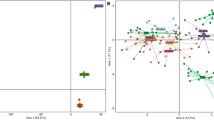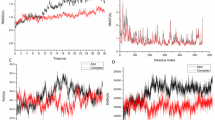Abstract
THE vines of Vanilla planifolia Andrews will climb to heights of 60 ft. or more, if provided with a sufficiently tall support plant. The vine must therefore be trained to a height convenient for pollination and harvesting in the commercial production of vanilla. The prevention of the natural tendency to climb is thought to enhance the production of flowers1. It is believed that flowering will not occur as long as the vine can climb upward2–7. Childers3 suggests that “bending of vine appears to be an important factor in causing it to flower and fruit beyond the bend, which may be due to an accumulation of carbohydrates and possibly other flower-forming materials in this region of the vine”.
This is a preview of subscription content, access via your institution
Access options
Subscribe to this journal
Receive 51 print issues and online access
$199.00 per year
only $3.90 per issue
Buy this article
- Purchase on SpringerLink
- Instant access to full article PDF
Prices may be subject to local taxes which are calculated during checkout
Similar content being viewed by others
References
Bouriquet, G., Encyclopedia Biologique, 46, 429 (Paul Lechevalier, Paris, 1954).
Childers, N. F., and Cibes, H. R., Fed. Exp. Sta. Puerto Rico Circ., 28, 1 (1948).
Childers, N. F., Cibes, H. R., and Hernández-Medina, E., in The Orchids: a Scientific Survey, edit. by Withner, C. L., 482 (Ronald Press Co., New York, 1959).
Collens, A. E., and Warneford, F. H. S., Antigua (Leeward Islands), 11 (Government Printing Office, 1925).
Correll, D. S., Lloydia, 7, 236 (1944).
Correll, D. S., Econ. Bot., 7, 291 (1953).
McFarlane, A., Bull. Trinidad Bot. Dept., 35, 465 (1902).
Author information
Authors and Affiliations
Rights and permissions
About this article
Cite this article
IRVINE, J., DELFEL, N. Flowering Behaviour of Vanilla. Nature 190, 366 (1961). https://doi.org/10.1038/190366a0
Issue date:
DOI: https://doi.org/10.1038/190366a0



